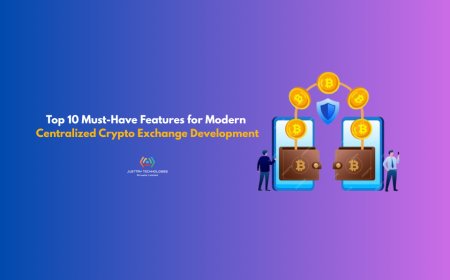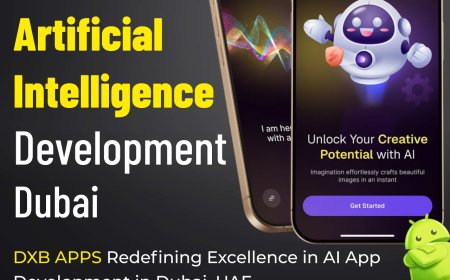Best 7 Innovations Shaping the Future of Mobile App UX
Explore 7 innovations shaping mobile app UX in 2025. From AI-driven personalization and VUI to AR/MR, haptics, and ethical design, discover how your Mobile App Development USA partner can create truly engaging apps.

In the rapidly accelerating world of mobile technology, User Experience (UX) is no longer just about intuitive design; it's about creating deeply engaging, personalized, and seamless interactions that anticipate user needs. As we look towards 2025, the innovations shaping mobile app UX are driven by advancements in AI, immersive technologies, and a renewed focus on human-centric design. For any Mobile App Development USA company, staying ahead of these trends is critical to building applications that truly resonate with users and stand out in a crowded market.
The future of mobile app UX is moving beyond simple taps and swipes to encompass a multi-sensory, intelligent, and context-aware experience. These innovations aim to make interactions feel more natural, efficient, and even emotionally resonant.
Here are 7 key innovations shaping the future of mobile app UX in 2025:
1. AI-Driven Personalization and Adaptive Interfaces
Artificial Intelligence is the invisible backbone of highly personalized and adaptive user experiences. This goes beyond simple recommendations to real-time UI adjustments.
-
How it works: AI analyzes vast amounts of user data, including past behavior, preferences, location, time of day, and even emotional states (as discussed in a previous article). Based on these insights, the app's interface can dynamically reconfigure, prioritize content, or suggest next actions.
-
Impact on UX: Users experience a tailor-made app that anticipates their needs. A navigation app might automatically suggest the fastest route home based on traffic and time of day without explicit input. A news app could rearrange its layout to highlight articles relevant to the user's current mood or interests, making the experience feel incredibly intuitive and efficient. This proactive adaptation significantly reduces cognitive load and enhances user satisfaction, a core aim for any Mobile App Development solution.
2. Voice User Interfaces (VUI) and Multimodal Interaction
Hands-free interaction is becoming increasingly sophisticated, moving beyond simple commands to natural, conversational experiences.
-
How it works: Advanced NLP and speech recognition allow users to interact with apps using natural language. The "multimodal" aspect means VUI is integrated with touch, gestures, and even haptic feedback. For example, you might speak a command, then confirm it with a tap, or receive a haptic buzz as feedback.
-
Impact on UX: VUI offers enhanced accessibility for users with disabilities and provides convenience in scenarios where hands are occupied (e.g., driving, cooking, exercising). Imagine controlling a complex design app with voice commands and refining elements with precise gestures, creating a fluid and efficient workflow.
3. Immersive Augmented Reality (AR) and Mixed Reality (MR) Experiences
AR and MR are blurring the lines between the digital and physical worlds, transforming how users interact with information and products.
-
How it works: Mobile devices, combined with advanced computer vision and sensors, overlay digital content onto the real world (AR) or seamlessly blend digital objects into the physical environment (MR). This creates interactive and spatial experiences.
-
Impact on UX: Retail apps allow users to virtually "try on" clothes or "place" furniture in their homes before buying. Education apps offer immersive learning environments with 3D models. Navigation apps can provide AR overlays on live camera feeds to guide users. These experiences are highly engaging and provide a deeper understanding of content, moving UX beyond a flat screen to a truly interactive environment.
4. Advanced Haptic Feedback
Haptic technology is evolving beyond simple vibrations to deliver nuanced, tactile sensations that provide richer feedback and immersion.
-
How it works: Sophisticated haptic engines in devices can create varied sensations like textures, bumps, or resistance, mimicking real-world interactions. This subtle tactile feedback enhances realism and provides non-visual cues.
-
Impact on UX: Typing on a virtual keyboard might feel more realistic with subtle haptic clicks. Gaming apps can provide immersive feedback for in-game actions (e.g., feeling the recoil of a virtual weapon). Confirmation of a successful action, or a gentle alert for an incoming notification, can be conveyed through unique haptic patterns, adding another sensory layer to the user interface.
5. Intuitive Gesture Control
While touch gestures are already fundamental, future innovations will see more sophisticated and context-aware gestural controls, potentially moving beyond direct screen interaction.
-
How it works: Advanced sensors and AI interpret complex hand movements, body gestures, or even eye movements as commands. This could include gestures performed in the air, away from the screen, or precise finger movements on the screen.
-
Impact on UX: Users could navigate menus with subtle hand flicks, zoom in on maps with precise two-finger rotations, or dismiss notifications with a wave. This frees up screen real estate and makes interaction feel more natural and fluid, particularly as wearable technology like smart glasses become more prevalent.
6. Contextual and Proactive UX
Apps are becoming smarter at understanding the "why" behind user actions and offering assistance even before being asked.
-
How it works: Leveraging data from location, connected devices, user habits, and external factors (like weather), apps can anticipate needs. For example, a travel app might pre-populate flight details as you approach the airport.
-
Impact on UX: This proactive approach minimizes steps and reduces decision fatigue. An app could automatically switch to a "driving mode" interface when it detects you're in a car, or suggest a specific playlist based on your current activity and mood. This makes the app feel incredibly intelligent and helpful, leading to a frictionless experience. Any reputable Mobile App Development partner will prioritize embedding this level of contextual intelligence.
7. Sustainable and Ethical UX Design
As environmental awareness grows, the impact of digital products on energy consumption and mental well-being is gaining prominence in UX design.
-
How it works: This involves designing apps with efficient code, optimized graphics, and minimalist interfaces to reduce data transfer and processing power, thereby lowering energy consumption. It also includes features like dark modes and content controls to reduce eye strain and encourage mindful app usage.
-
Impact on UX: Users benefit from faster, more battery-efficient apps. Furthermore, designing for user well-being, by avoiding "dark patterns" or addictive features, creates a more ethical and trustworthy experience. This trend reflects a broader societal shift towards sustainability and responsible technology use, influencing how Mobile App Development approaches design.
Conclusion
The future of mobile app UX in 2025 is an exciting frontier where technology meets human intuition. From AI-powered personalization and immersive AR to tactile feedback and ethical design, these innovations are collectively working to create mobile experiences that are not only functional but also deeply intuitive, engaging, and genuinely useful. For Mobile App Development companies aiming to thrive in this evolving landscape, embracing these trends and investing in their implementation will be paramount to crafting applications that truly connect with users and shape the digital experiences of tomorrow.

































